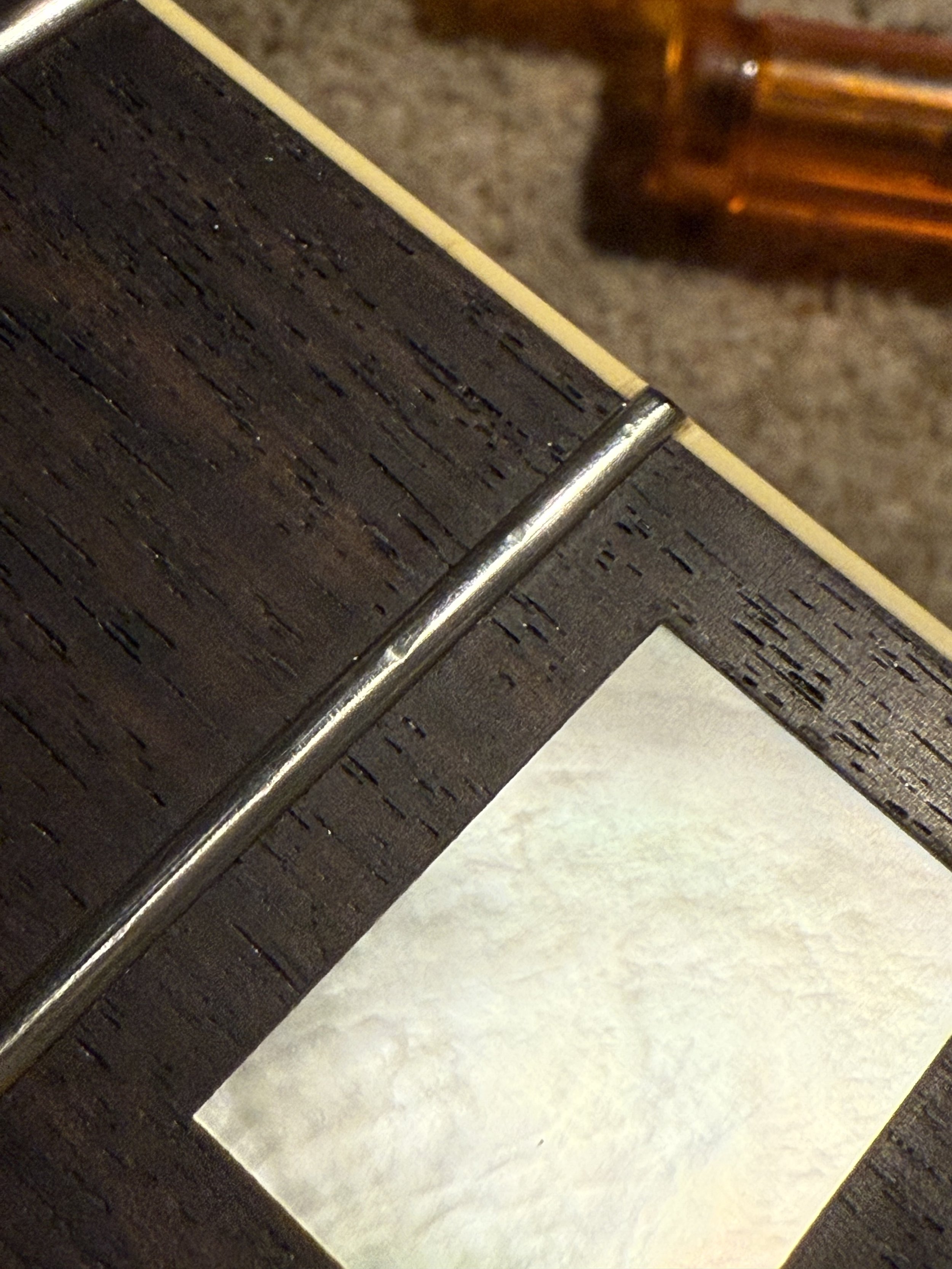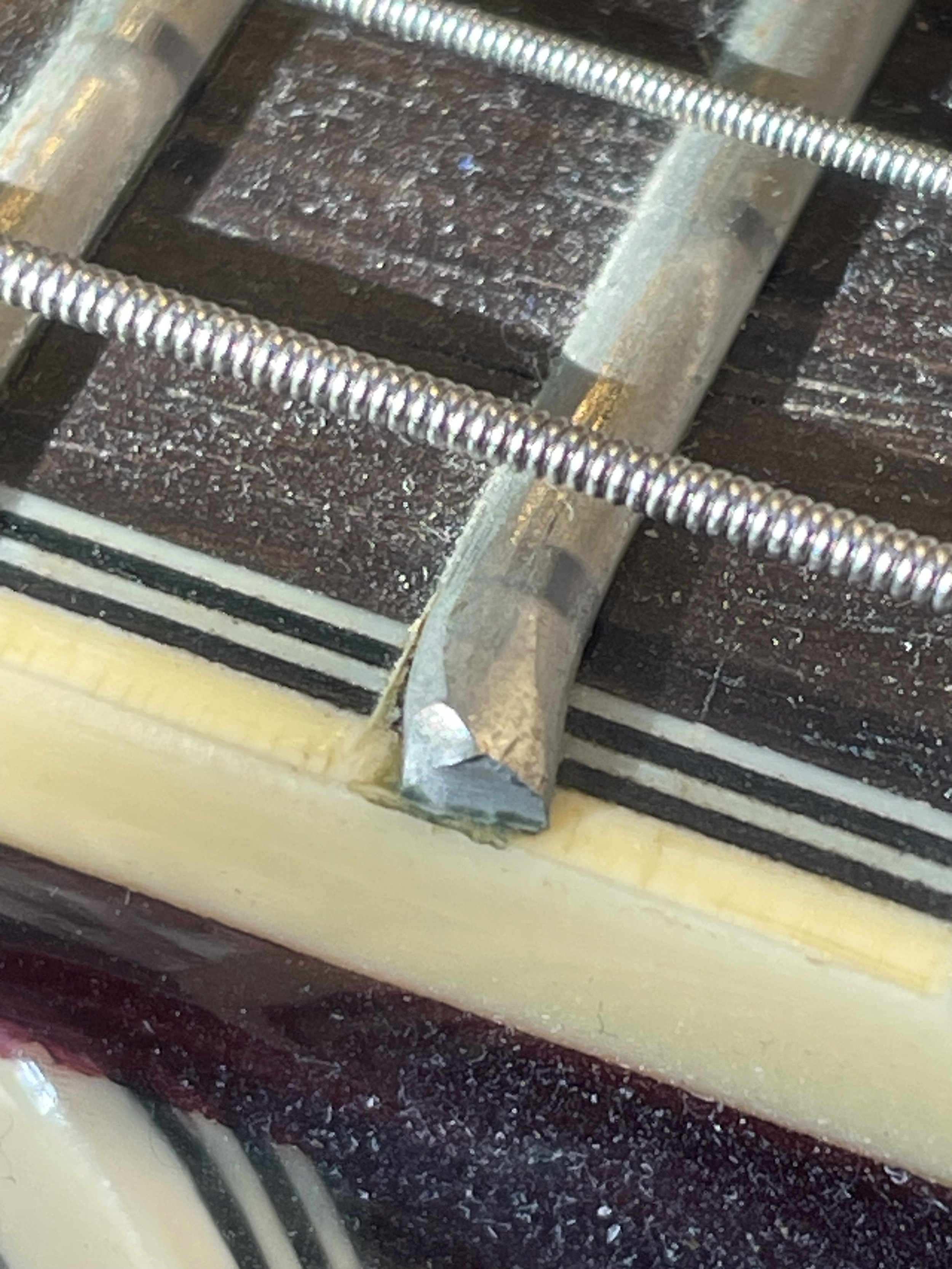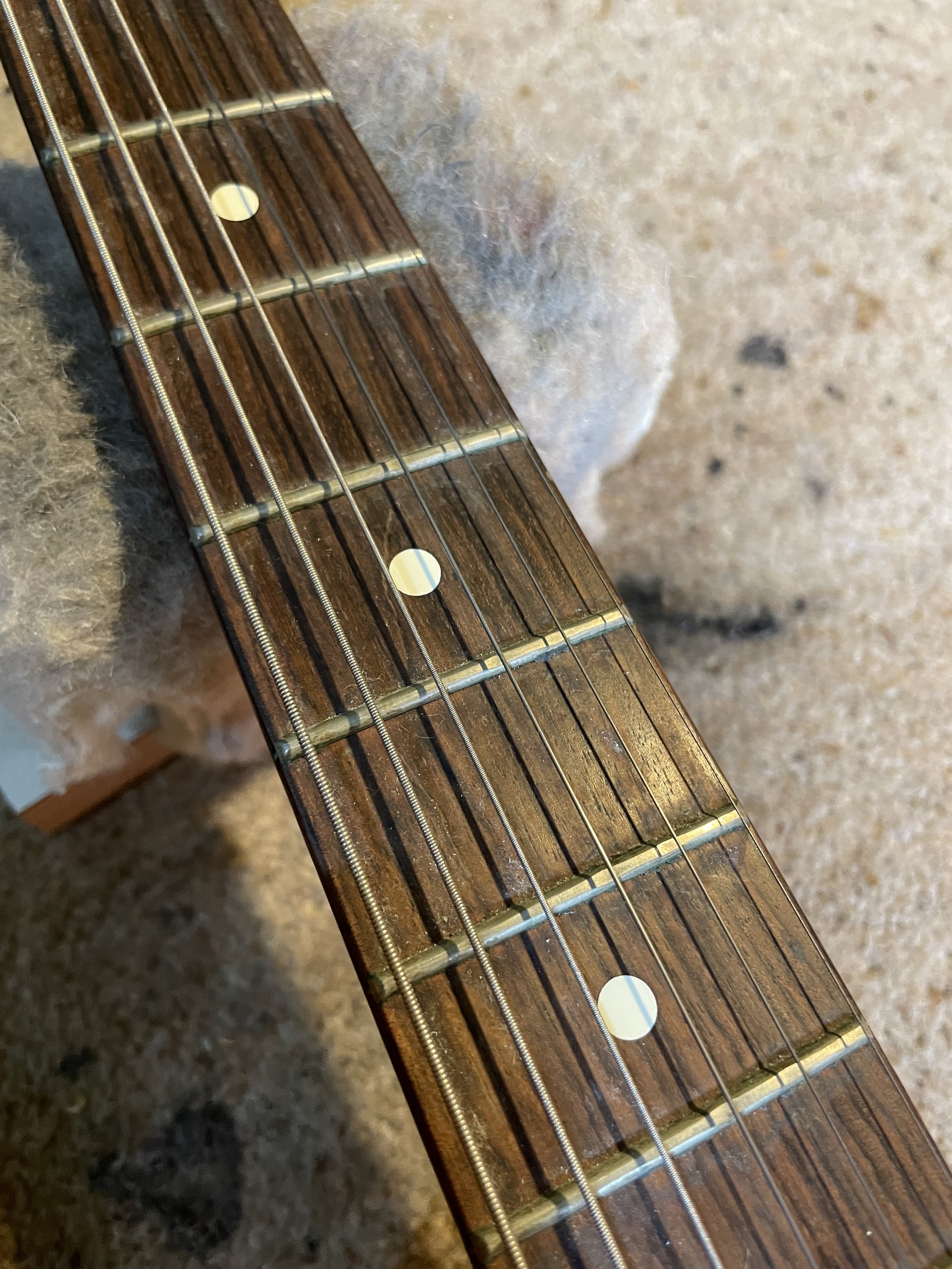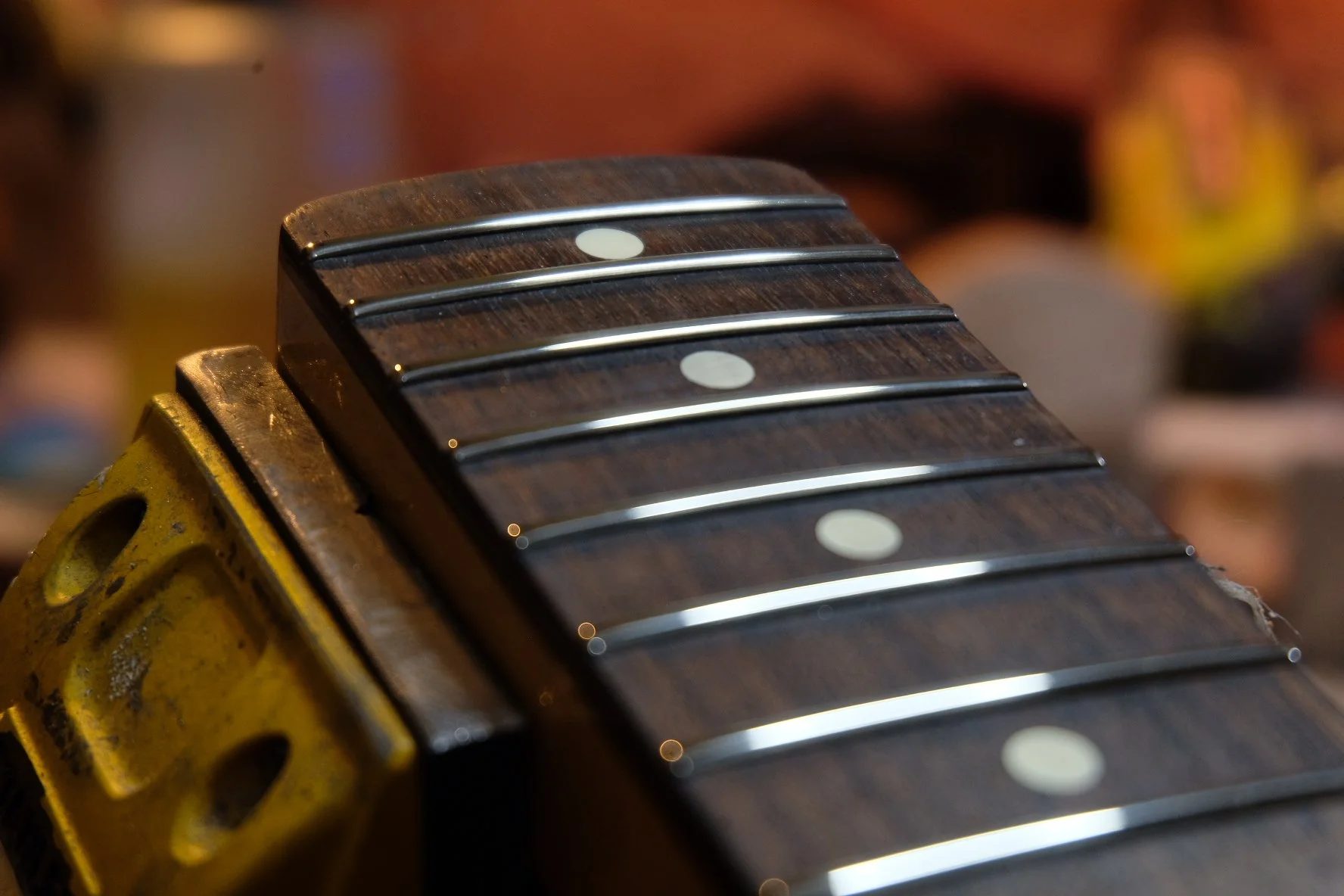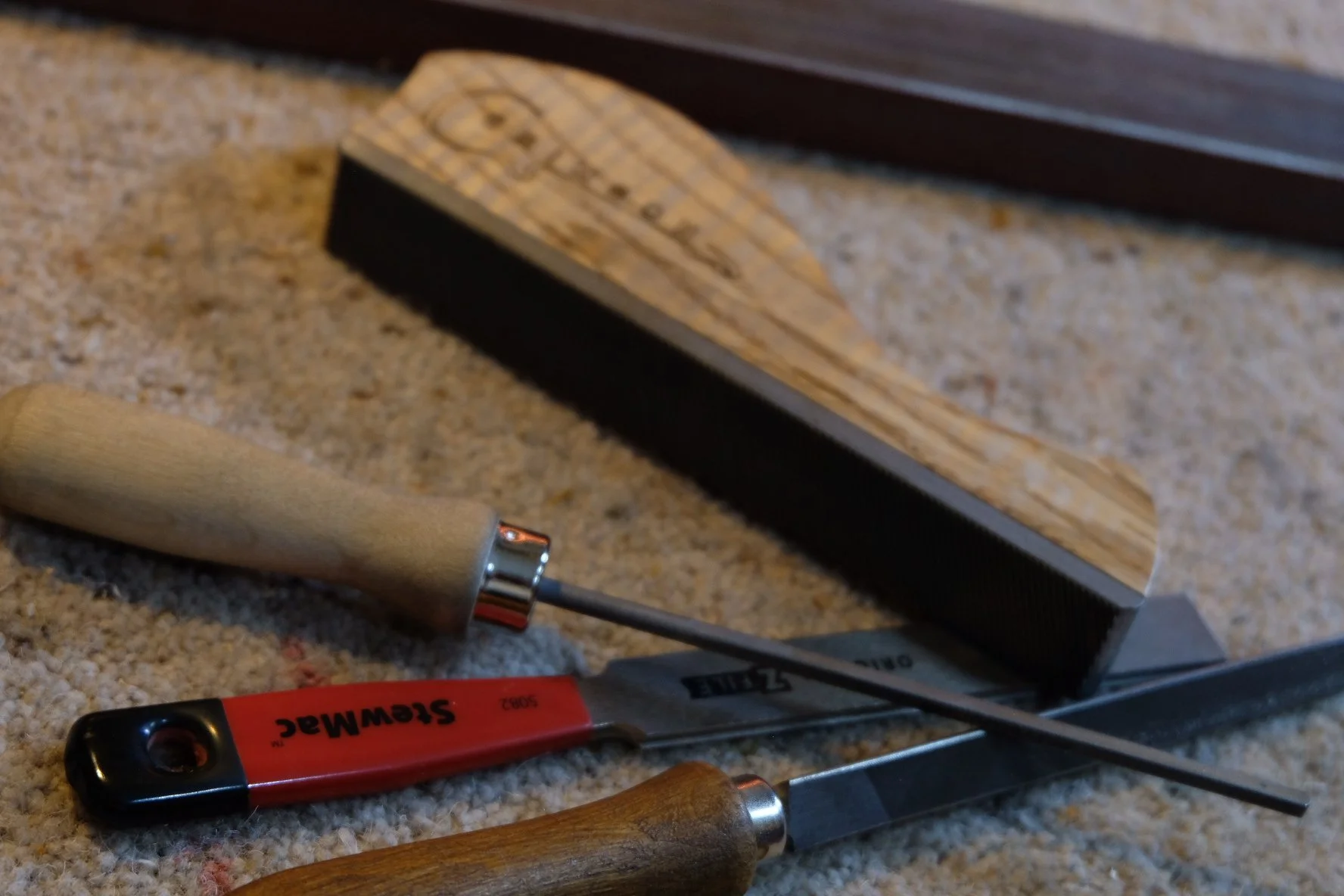What is
fret work?
The neck and frets ARE the instrument, its the part of the guitar you interact with. Your hands pick up on all the tiny details and you feel it, it all adds up. A straight neck with finely dressed frets feels like a millions bucks.
Over time the frets on a guitar wear down, where ever you play the most the more obvious the fret wear will be, taking the form of little pits and gouges or even flattened areas from a lot of bending. This can lead to fret buzz, notes being slightly out of tune and generally be an undesirable playing experience. We’ve all felt it, that raspy feeling like grinding when trying to bend a string or fret a difficult chord.
Most fretwork takes the form of fret levelling, removing material from the tops of the frets until they’re all the same height again, no more pits and gouges.
So we get a long flat metal beam with sand paper taped to it and level the frets along the fretboard whilst keeping the radius, sanding the tops down until those gouges disappear. Next each fret is crowned, meaning its shaped back into a dome evenly along the length of the fret, bringing the apex of the dome directly in middle for the best intonation. Finally each fret is polished to a mirror shine, making them feel very smooth to play and bends feel like gliding.
The ultimate goal is to eliminate as much fret buzz as possible. Levelling the frets gives an instrument the best chance at having a comfortable playing experience with minimal buzz.
There is of course a lot prep work before and throughout this process making it very time consuming and lengthy work but totally worth it. If the pits and gouges in your frets are too low then a re-fret is likely needed
Another reason you might require fret work is that your guitar may never have had any done when it was made! more budget instruments skip the fret levelling and dressing stage in production to save time, they simply glue and press the frets in, which gets them within the ballpark of playable but further work is almost always needed to make any new guitar play like a dream.
Some guitars fret boards can shrink over time or with the change of the seasons, exposing the frets ends ever so slightly, just enough to catch the skin on your fingers and in some cases even sharp enough to injure. in this case you’d need those ends filing back and potentially some frets requiring re-seating. After filing, each fret end would require the sharps edges again filed round and polished to be comfortable to play.
Fret work can cost between £85 - £150 depending on what is needed and what instrument you have.
Fret buzz!
Fret buzz is the nemesis of all fretted instruments. Think of a string vibrating down the fretboard, it has any amount between 0 and 22 frets to avoid touching it order vibrate freely without buzzing against any, this rule is true for any given string on any given fret on the fretboard. In an ideal world we’d have a perfectly straight neck with an appropriate amount of relief without warping and the frets should act as a sort of staircase, with each subsequent fret being fractionally lower than the last giving enough room for the string to vibrate on any given fret without buzzing from any others.
This is why levelling is so important to achieve a minimal buzz instrument with low comfortable action.
I say minimal buzz, because at the end of the day guitars are made of bendy wood and metal strings that vibrate within 0.1mm of metal frets. And so a guitar with super low action (1mm) is naturally more likely to buzz or choke out even if the frets have been levelled perfectly. Wood can bend in undesirable ways, expand and contract, dry out and warp over time, tiny changes can have big impacts. A guitar with low action with no fret buzz might play well in the summer, but by winter its starting choke out on bends and suffer some buzz around the middle frets.
An instruments setup can only be as good as its fret work.
If you desired low action on your instrument you’d probably try and tighten the truss rod until the neck was pretty much straight but with a tiny bit of relief, next you drop the bridge or saddles until you dialled in the 1mm-1.5mm action for each string you desire, a final tune up and you expect effortless playing but…. it sounds like choking and buzzing, notes have no sustain or ring and don’t even try bending! It feels like it should play but the strings just don’t have enough room to vibrate freely.
This is likely because your frets aren’t level with each other, some are higher than others. This could be because the frets were never levelled when it was first made, perhaps the neck is ever so slightly warped and many other reasons. Note if that high fret happens to be near the end of the fretboard it will likely affect every note that comes before it!
Sometimes this can be solved by tapping the offending frets down with a punch and hammer, but most of the time some amount of levelling is required to achieve a low action buzz free setup. A secondary levelling process is often employed called Fall-away, this is when the frets beyond the 15th/16th fret are levelled slightly lower and gradually tapered down to accommodate string vibration in certain areas on the neck and sometimes to compensate for ski ramping.
Examples of guitars in need of fretwork
